Half Title
Title Page
Copyright Page
Contents
1 Introduction
1.1 What are DLs and where do they come from?
1.2 What are they good for and how are they used?
1.3 A brief history of description logic
1.4 How to use this book
2 A Basic Description Logic
2.1 The concept language of the DL ALC
2.2 ALC knowledge bases
2.2.1 ALC TBoxes
2.2.2 ALC ABoxes
2.2.3 Restricted TBoxes and concept definitions
2.3 Basic reasoning problems and services
2.4 Using reasoning services
2.5 Extensions of the basic DL ALC
2.5.1 Inverse roles
2.5.2 Number restrictions
2.5.3 Nominals
2.5.4 Role hierarchies
2.5.5 Transitive roles
2.6 DLs and other logics
2.6.1 DLs as decidable fragments of first-order logic
2.6.2 DLs as cousins of modal logic
2.7 Historical context and literature review
3 A Little Bit of Model Theory
3.1 Bisimulation
3.2 Expressive power
3.3 Closure under disjoint union
3.4 Finite model property
3.5 Tree model property
3.6 Historical context and literature review
4 Reasoning in DLs with Tableau Algorithms
4.1 Tableau basics
4.2 A tableau algorithm for ALC
4.2.1 ABox consistency
4.2.2 Acyclic knowledge base consistency
4.2.3 General knowledge base consistency
4.3 A tableau algorithm for ALCIN
4.3.1 Inverse roles
4.3.2 Number restrictions
4.3.3 Combining inverse roles and number restrictions
4.4 Some implementation issues
4.4.1 Or-branching
4.4.2 And-branching
4.4.3 Classification
4.5 Historical context and literature review
5 Complexity
5.1 Concept satisfiability in ALC
5.1.1 Acyclic TBoxes and no TBoxes
5.1.2 General TBoxes
5.2 Concept satisfiability beyond ALC
5.2.1 ALC with inverse roles and nominals
5.2.2 Further adding number restrictions
5.3 Undecidable extensions of ALC
5.3.1 Role value maps
5.3.2 Concrete domains
5.4 Historical context and literature review
6 Reasoning in the εL Family of Description Logics
6.1 Subsumption in εL
6.1.1 Normalisation
6.1.2 The classification procedure
6.2 Subsumption in εLI
6.2.1 Normalisation
6.2.2 The classification procedure
6.3 Comparing the two subsumption algorithms
6.3.1 Comparing the classification rules
6.3.2 A more abstract point of view
6.4 Historical context and literature review
7 Query Answering
7.1 Conjunctive queries and FO queries
7.2 FO-rewritability and DL-Lite
7.2.1 Introducing DL-Lite
7.2.2 Universal models
7.2.3 FO-rewritability in DL-Lite
7.3 Datalog-rewritability in εL and εLI
7.3.1 Fundamentals of Datalog
7.3.2 Datalog-rewritings in εLI
7.3.3 Short Datalog-rewritings in εL
7.4 Complexity aspects
7.5 Historical context and literature review
8 Ontology Languages and Applications
8.1 The OWL ontology language
8.1.1 OWL and RDF
8.1.2 OWL and SROIQ
8.1.3 OWL ontologies
8.1.4 Non-DL features
8.1.5 OWL profiles
8.2 OWL tools and applications
8.2.1 The OWL API
8.2.2 OWL reasoners
8.2.3 Ontology engineering tools
8.2.4 OWL applications
Appendix: Description Logic Terminology
A.1 Syntax and semantics of concept and role constructors 228
A.2 Syntax and semantics of knowledge bases
A.3 Naming schemes for description logics
References
Index

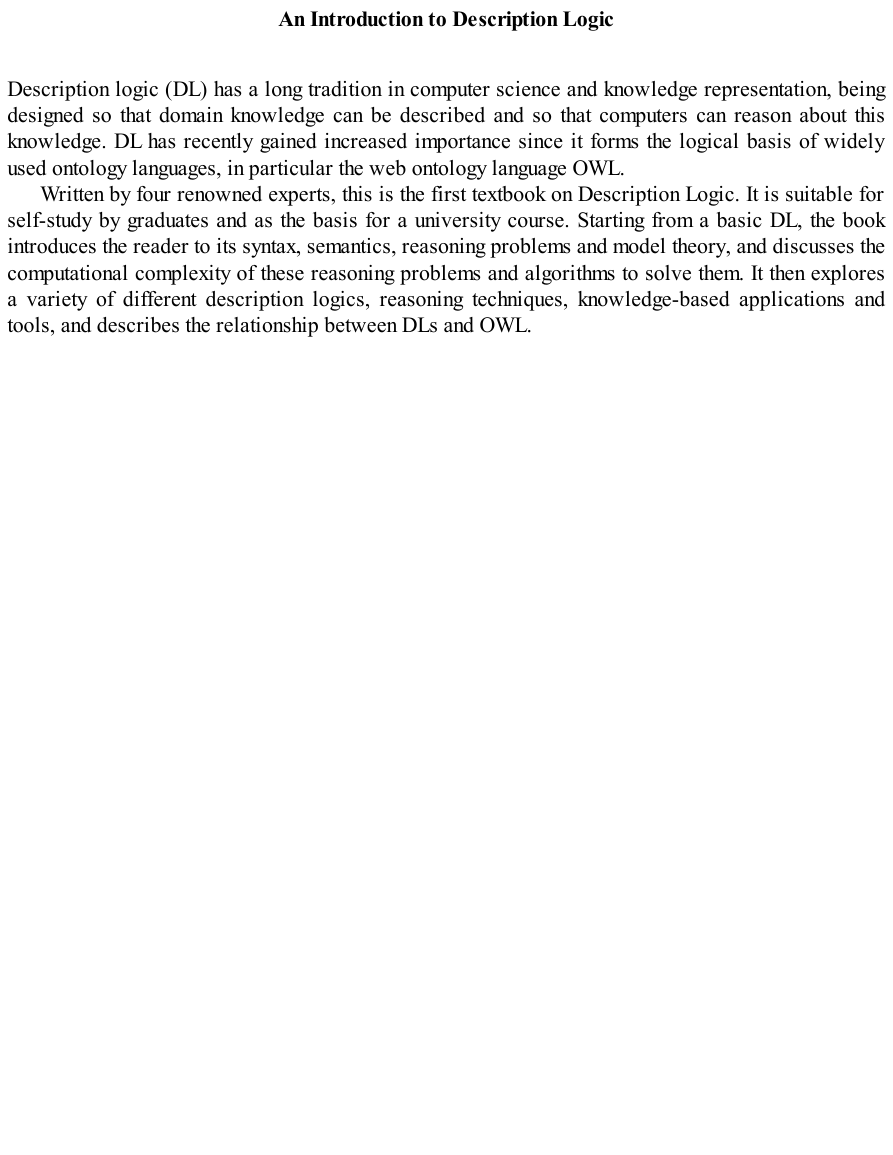
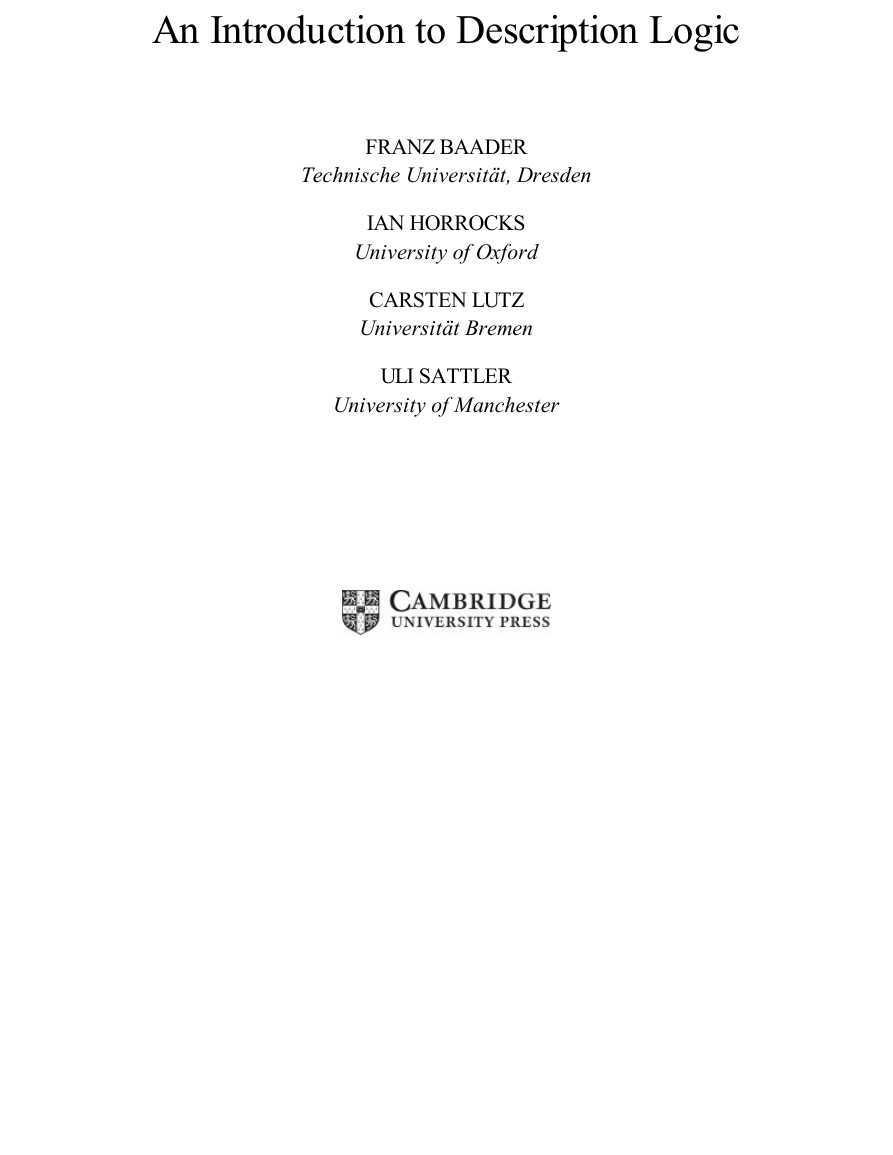
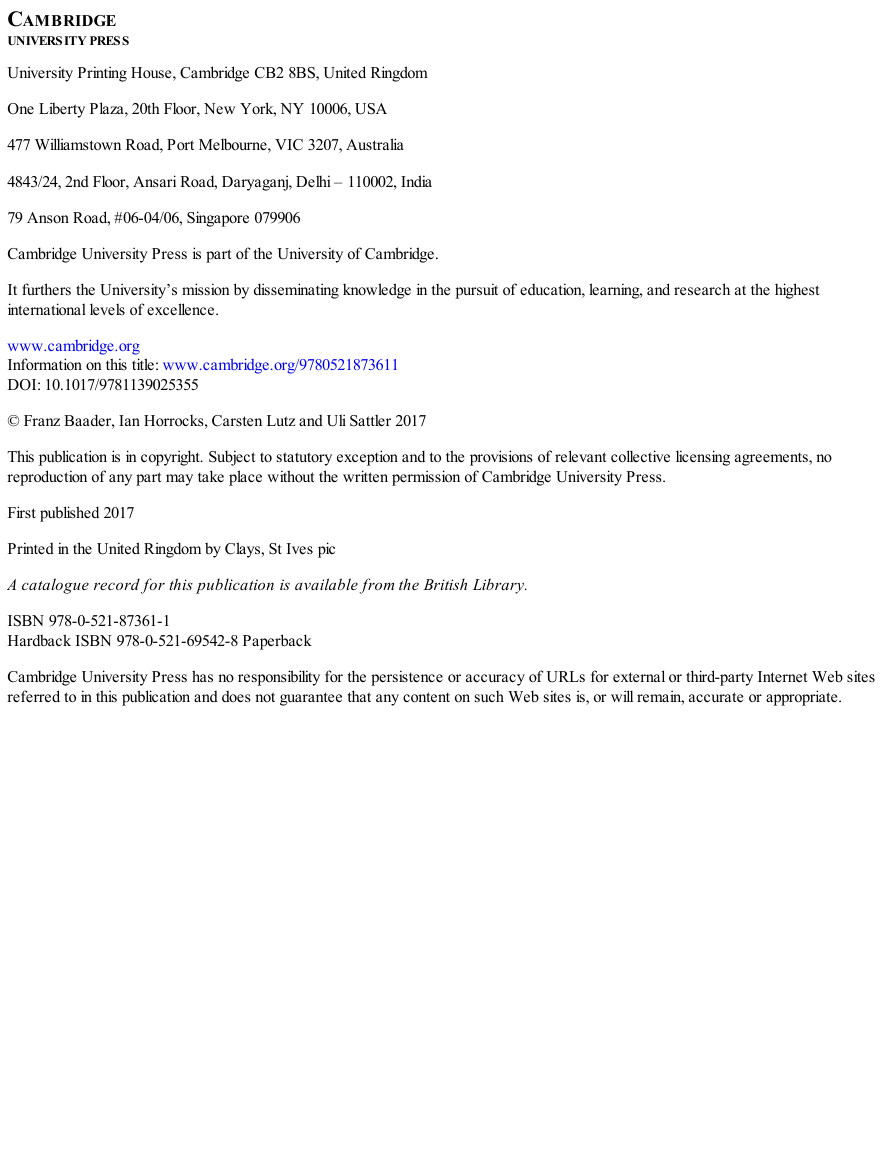
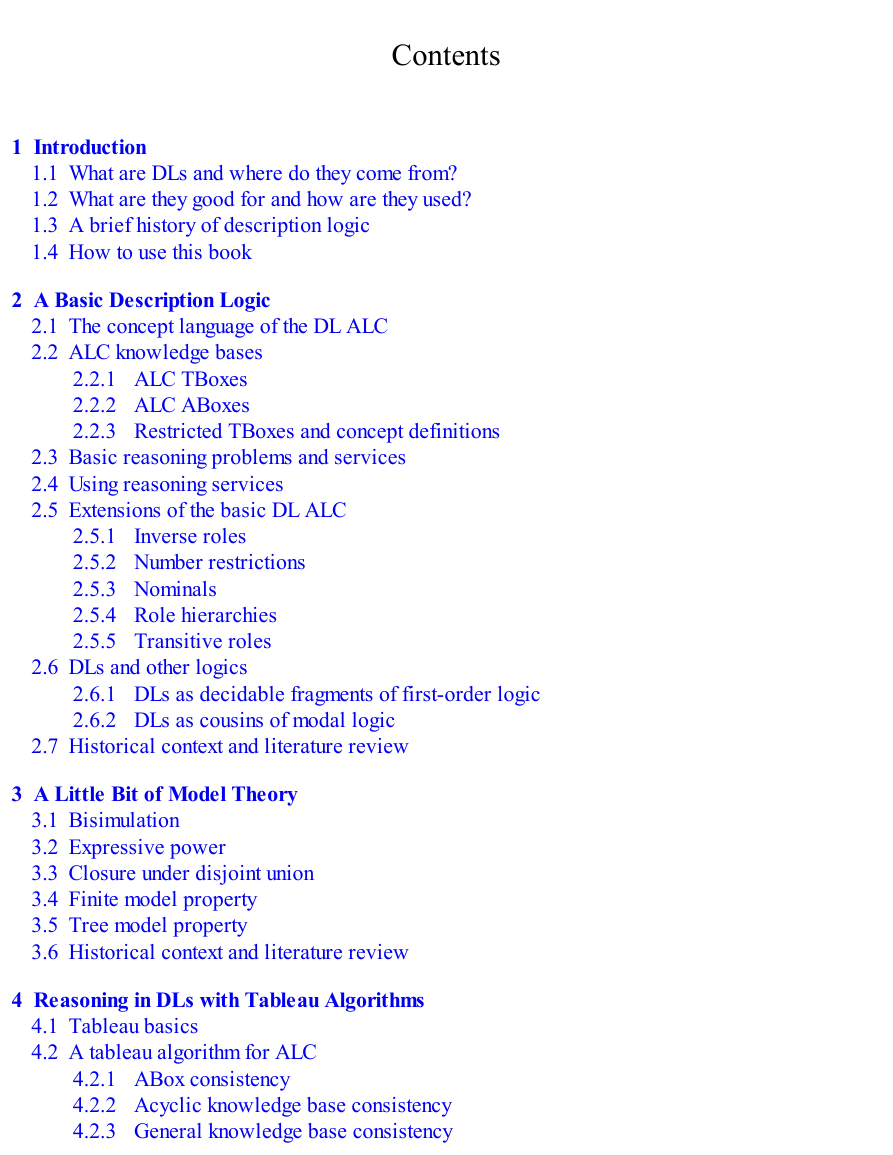
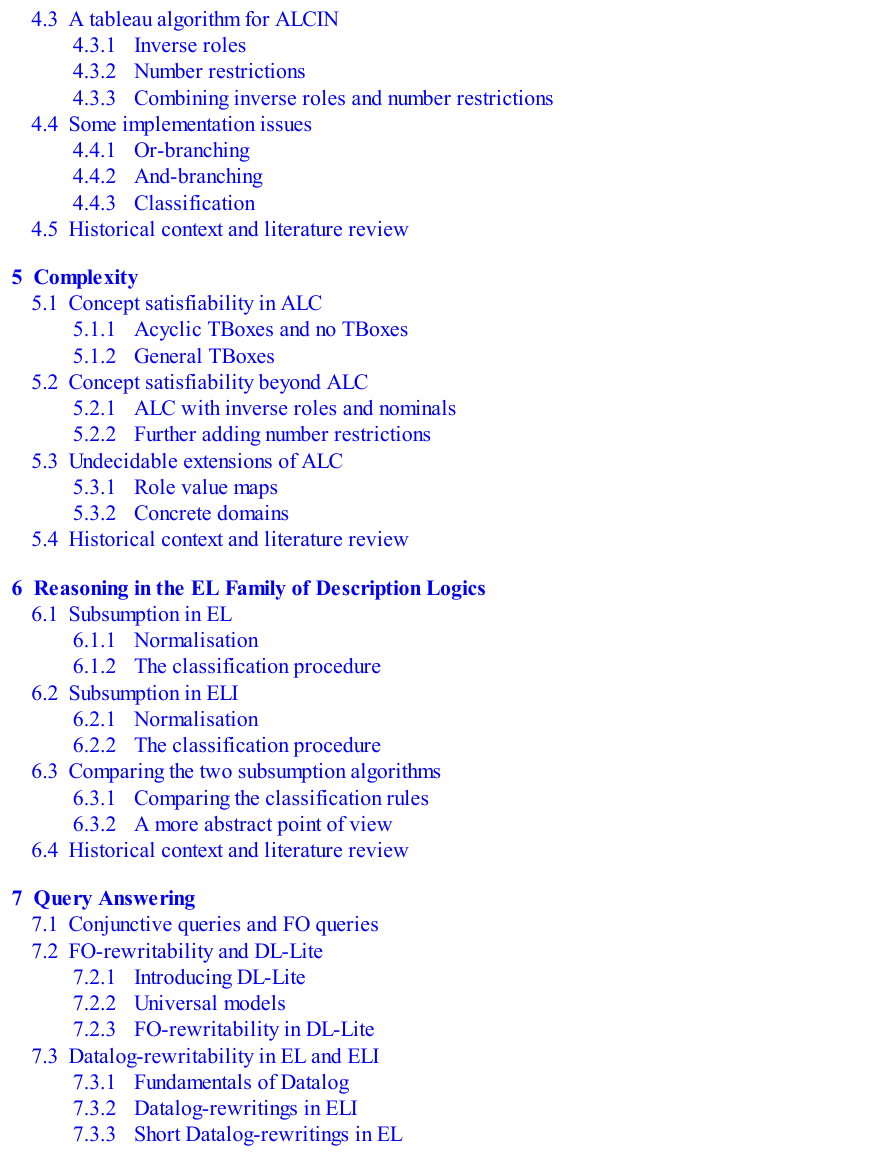










 2023年江西萍乡中考道德与法治真题及答案.doc
2023年江西萍乡中考道德与法治真题及答案.doc 2012年重庆南川中考生物真题及答案.doc
2012年重庆南川中考生物真题及答案.doc 2013年江西师范大学地理学综合及文艺理论基础考研真题.doc
2013年江西师范大学地理学综合及文艺理论基础考研真题.doc 2020年四川甘孜小升初语文真题及答案I卷.doc
2020年四川甘孜小升初语文真题及答案I卷.doc 2020年注册岩土工程师专业基础考试真题及答案.doc
2020年注册岩土工程师专业基础考试真题及答案.doc 2023-2024学年福建省厦门市九年级上学期数学月考试题及答案.doc
2023-2024学年福建省厦门市九年级上学期数学月考试题及答案.doc 2021-2022学年辽宁省沈阳市大东区九年级上学期语文期末试题及答案.doc
2021-2022学年辽宁省沈阳市大东区九年级上学期语文期末试题及答案.doc 2022-2023学年北京东城区初三第一学期物理期末试卷及答案.doc
2022-2023学年北京东城区初三第一学期物理期末试卷及答案.doc 2018上半年江西教师资格初中地理学科知识与教学能力真题及答案.doc
2018上半年江西教师资格初中地理学科知识与教学能力真题及答案.doc 2012年河北国家公务员申论考试真题及答案-省级.doc
2012年河北国家公务员申论考试真题及答案-省级.doc 2020-2021学年江苏省扬州市江都区邵樊片九年级上学期数学第一次质量检测试题及答案.doc
2020-2021学年江苏省扬州市江都区邵樊片九年级上学期数学第一次质量检测试题及答案.doc 2022下半年黑龙江教师资格证中学综合素质真题及答案.doc
2022下半年黑龙江教师资格证中学综合素质真题及答案.doc